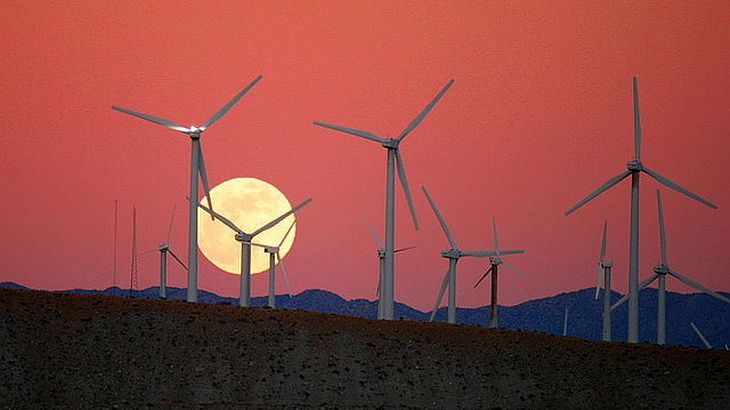Germany’s transition to a renewable power system is on track, writes Gert Brunekreeft. But it’s costing households €218 a year in surcharges, causing voter enthusiasm to wane. That may be about to change though. The surcharge is about to fall, while targets stay the same – a sign that renewable energy costs may be falling faster than expected.
Germany is well on its way towards having a predominantly green electricity supply, according to theecologist.org.
The transition from nuclear and fossil-fuel electricity to using renewables is happening faster than anyone had anticipated. This is a success, but there is a downside: it is hugely expensive.
The energy transition is an explicit policy goal in Germany, having been made a priority project by the German chancellor, Angela Merkel.
It has four strands: reducing CO2 emissions, improving energy efficiency, promoting renewable energy and the gradual phase-out of nuclear power.
Nuclear phase-out is actually an old story that started in 2000 when the Schroeder administration first announced a 20-year timetable.
It was a bit of a ‘yes-no’ rollercoaster until the Fukushima incident, after which the decision in favour was final. This is widely supported by the German public, meaning that nuclear power is politically not an option at the moment.
Installed renewable capacity now equals demand
Yet without a doubt, the most significant development within the energy transition project has been the growth of Germany’s renewable energy sources (RES).
The approximate maximum demand at any time is of about 85GW (this will not change much in the future).
This shows that installed renewable capacity is now already more or less equal to maximum demand. On a very sunny and windy day, renewables are now capable of meeting the demands of the entire country.
But as we all know, the weather is notoriously unreliable and variable. So a secure system needs more renewable capacity and also more reserve capacity from conventional power plants (mainly fuelled by natural gas) to make sure it can always meet demand.
Installed renewable capacity in 2050 is expected to be 180GW, which is roughly twice maximum demand. By that time, the target is that 80% of electricity supply will be from renewables.
Great benefits – but also high costs
In common with other countries moving in the same direction, the government has various motives for this big shift. Renewables are carbon-free and rely on no fossil fuels, so they are an essential component of meeting European emissions targets.
The government hopes for positive spin-off effects on exports, innovation and new jobs. And once the investment cost of the transition has been incurred, we would hope that electricity supply is actually quite cheap. After all, sun and wind are free. Germany sees the energy transition as an investment in the future: we pay for the next generation.
The move to renewables has been a success. It has happened at high speed since the late 1990s. The debate is no longer whether it will succeed, but rather what do we do with ‘too much’ renewable power. But behind this positive story, the dark side is the huge expense.
Early in 2013, the then minister of environment Peter Altmaier mentioned the staggering amount of €1 trillion as the potential cost of the overall transition.
This relied on a quick-and-dirty back-of-the-envelope calculation, which raises many questions and was never confirmed, but it does give a feel for the order of magnitude. The end-users – and thus the voters in Germany – are starting to feel the pain.
Since the installation costs mean that renewables currently cost more per unit of power than conventional power, they are subsidised by a surcharge on the electricity price. In other words, electricity end-users directly pay for it.
The surcharge for small end-users has soared since 2009 to cope with the rapid growth of installed capacity.
The total subsidy is currently about €20bn / year, which amounts to €218 / year per household on top of the normal electricity bill. Whether this is still affordable is a key question in the country right now.
The rising costs for residential end-users have become a political problem.
In 2014 the government responded with a reform package, which slows down the energy transition in an attempt to control the costs. Basically the annual growth of new renewables has been capped to a pre-determined level.
This seems to be working. The surcharge for 2015 has been calculated at 6.17 €c / kWh, which is a small decline compared to 2014. Politically, this may well have been a wise policy, as public support for the energy transition was dwindling. It means that green energy development will happen more slowly.
So far the government appears to be standing by the same targets, perhaps because the explosion in development over the past few years had put it on an even faster track.
Whatever happens from here, one thing remains key: without public support, the energy transition will not work.
